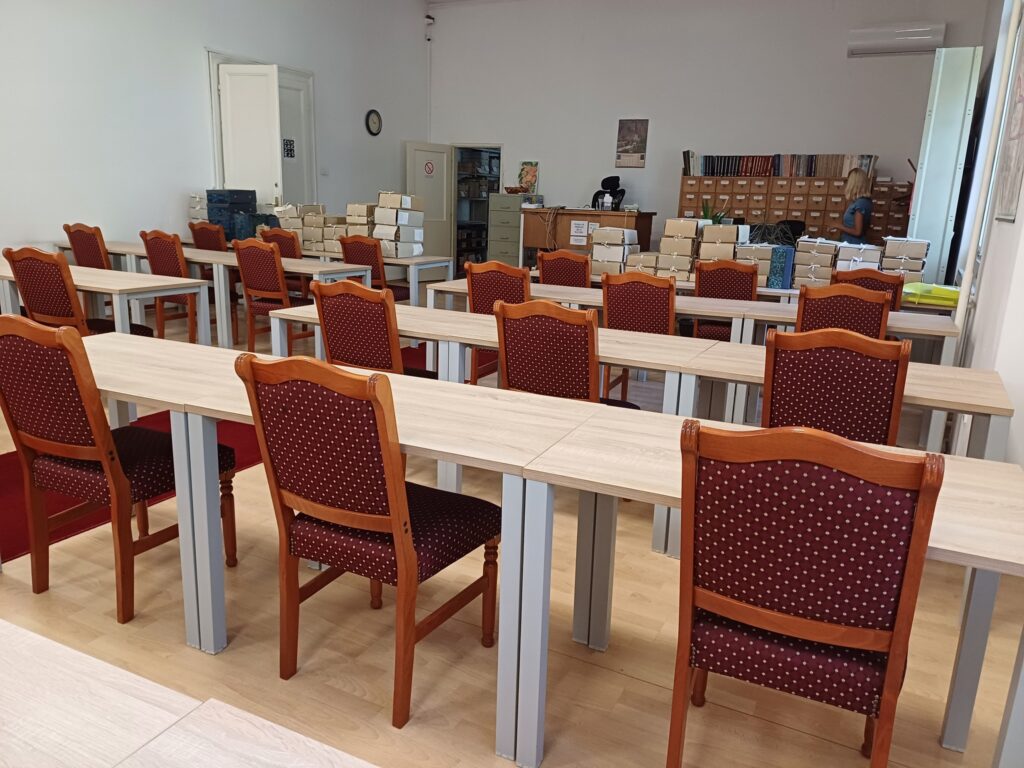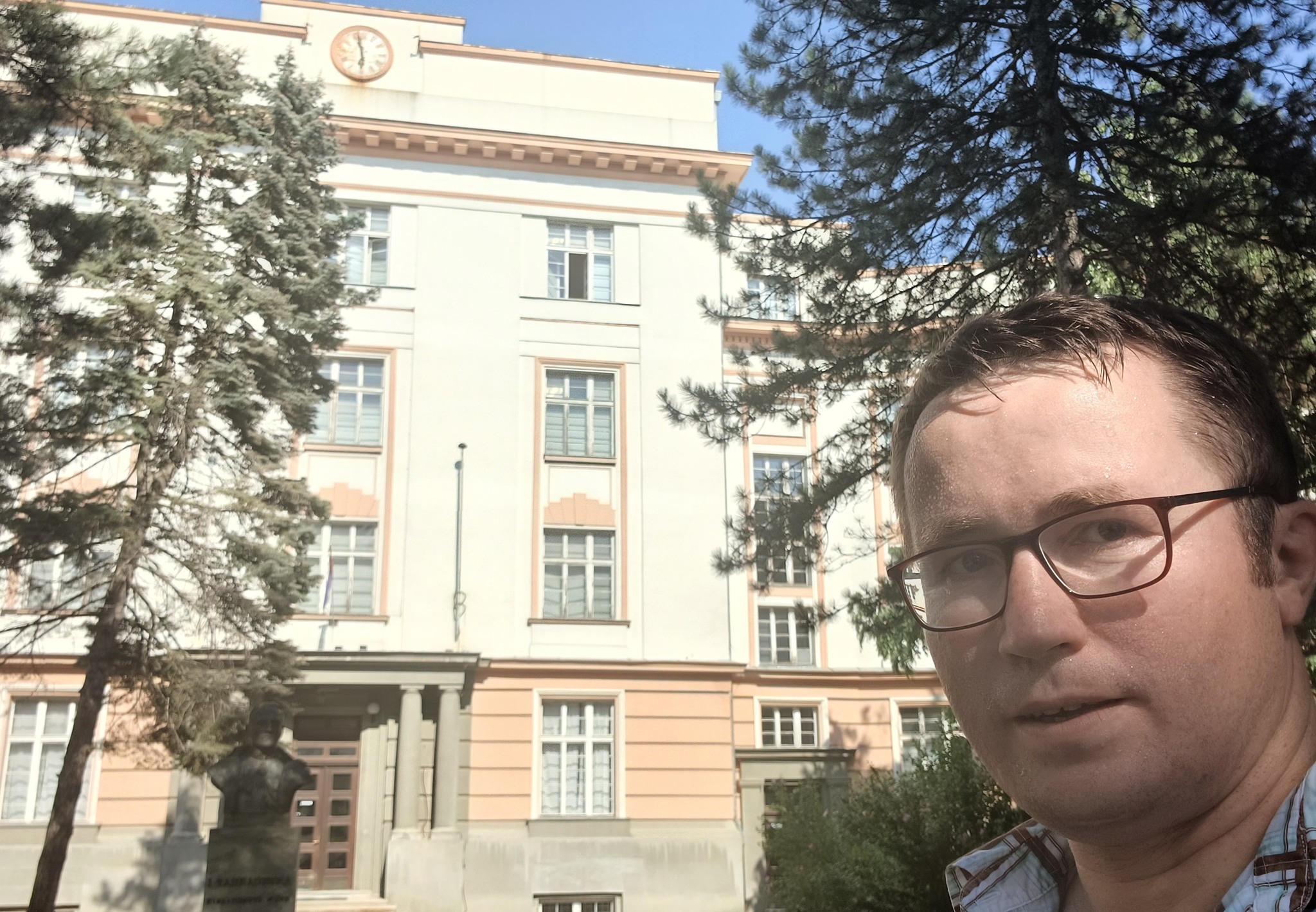by Željko Oset
The Archives of Yugoslavia is located in Belgrade in the vicinity of Topčider roundabout, the Museum of Yugoslavia, and the Tito’s mausoleum (Kuća cveća – House of flowers). Not far from the Archives one finds a villa which once belonged to Petar Karađorđević, or Peter I of Serbia as he is also known, founder of the Kingdom of Serbs, Croats, and Slovenes. Today, the villa is home to a museum about Karađorđević, though the exhibition is still under construction. The building of the Archives of Yugoslavia was built as an endowment of King Alexander I in 1930s, and in 1950s reassigned for archival purposes. King Aleksandar was one of the main driving forces behind the Yugoslav state-building project and indeed he is also known as Alexander the Unifier. As monarch, he was responsible for political, economic, and social development in Yugoslavia from the creation of the state in 1918 until his assassination in Marseille in 1934.
Yugoslavia was a relatively centralized country in the interwar period and the late 1940s and 1950s, so the Archives’ reading room and café have been meeting places for researchers interested in the history of Yugoslavia, its internal affairs, and its standing in the international community. There was a period in which seemingly innumerable scholars and historians were interested in pursuing research in the Archives in the hopes of arriving at a better understanding of the historical processes in Yugoslavia that preceded the bloody events of the 1990s, but this time is now a distant memory. The reading room still had a distinctive international character, at least during my last visit, when Corona Virus restrictions had been lifted. During my last research trip to the Archives in July 2023, when temperatures outside soared above 35° C, researchers from Canada, the Netherlands, Germany, Serbia, Montenegro, Croatia, the United States, and China were welcoming recent additions to the reading room: air-conditioning and digitized materials from the fonds at the Ministry of Internal Affairs.

In the Archives, I studied two fonds: the Ministry of Religions of the Kingdom of Serbs, Croats and Slovenes (1919–1929) and the Ministry of Foreign Affairs of the Kingdom of Yugoslavia. From the latter fond, I studied materials from Yugoslav diplomatic missions to Rome and the Vatican. Yugoslav diplomats in Rome filed several complaints concerning allegedly insufficient state financial support, but they also reported in great detail on Vatican’s attitude toward the general political situation in Italy, communist activities, and Mussolini’s rise to power. In some instances, tensions between Yugoslav diplomats and the Vatican were running high, especially when Yugoslavia sent its ambassador Josip Smodlaka to the Vatican, who was a known libertarian politician from Split (Dalmatia). Frustrated with Vatican’s inability to support Yugoslav minorities in Italy, Smodlaka made public insinuations concerning the Vatican’s anti-Yugoslav, supposedly pro-Italian positions, especially in terms of Church reorganization and in the situation in Dalmatia. Such assessments were part of the prevailing political and media discourse, as well as the diplomatic chatter behind the scenes in Belgrade, but from a diplomatic point of view, it was clearly a blunder on Smodlaka’s part to express these views openly to the Vatican. The Holy See did not declare Smodlaka persona non grata, however. He was simply disinvited from diplomatic events and not accepted by the representatives of the Vatican. Eventually, Smodlaka was recalled, and the Yugoslav ambassador to Rome tried to smooth over relations, and the Belgrade government concluded that negotiations with the Vatican were essential if any solutions were going to be reached to the open issues with the Catholics of Yugoslavia, who were the second largest religious community in the religiously and ethnically diverse state. Because there was no valid concordat for Yugoslavia (the concordats which had been signed by Montenegro in 1886 and Serbia in 1914 had lapsed), there was no legal foundation for Yugoslav bishops to take an oath of allegiance. Oaths of allegiance were only taken by clergymen who were state employees, thus they took oaths as state employees.
Interwar Yugoslavia was an ethically and religiously diverse country held together by the secular project of integral Yugoslavism. Despite constitutionally guaranteed religious freedom, the state closely observed religious affairs. However, it deployed different strategies in its approaches to the three dominant religious communities. While it closely supervised the Serbian Orthodox Church (its unification, internal cohesion, and the selection of hierarchs), it made substantial efforts to limit collaboration between the leading echelons of the Catholic Church and the Muslim religious community, which had their centers in the Vatican and Istanbul, respectively. The various setbacks in the fulfillment of the Yugoslav state-building project had effects across society and impacted relations among the various religious communities. Detailed study of materials from the aforementioned fonds will help further a more nuanced understanding of relations between the Catholic Church and the Yugoslav state in the interwar period.
